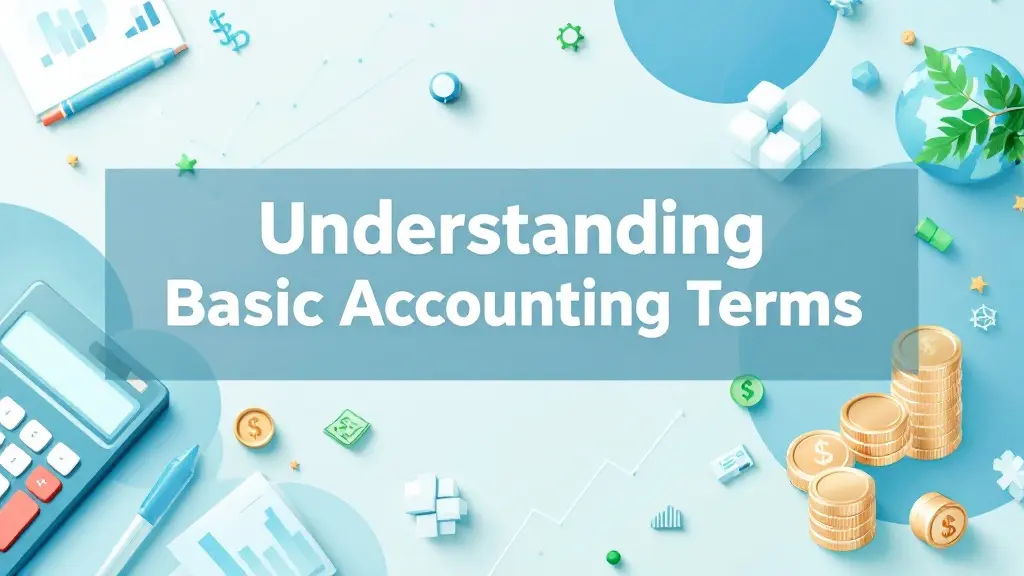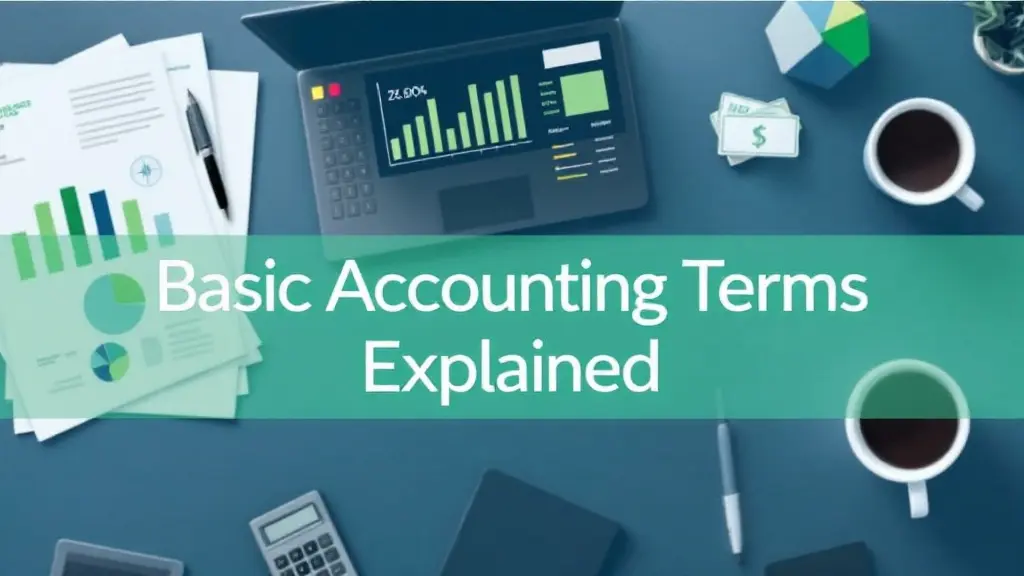A Comprehensive Guide to Basic Accounting Terms: Essential Notes for Beginners
Table of Contents
Most Read
[fusion_dropcap class="fusion-content-tb-dropcap"]I[/fusion_dropcap]ntroduction
Accounting is often seen as a complex field, full of technical terms and intricate concepts. However, understanding basic accounting terms is essential for anyone managing a business, pursuing a career in finance, or even handling personal finances. If you are new to accounting, don’t worry – this guide will break down the most common accounting terms in an easy-to-understand and engaging way. Let’s dive into the fundamentals!
What is Accounting?
Before we explore accounting terms, let’s first understand what accounting is. Simply put, accounting is the process of recording, summarizing, and analyzing financial transactions to help businesses make informed decisions. It plays a critical role in maintaining financial transparency and ensuring compliance with regulatory standards.
Now that we know what accounting is, let’s look at some of the basic accounting terms every beginner should be familiar with.
1. Assets
Definition: Assets are resources owned by a business or individual that have economic value. Assets are used to generate income or can be converted into cash.
Types of Assets:
- Current Assets: These are short-term assets expected to be converted into cash within a year, such as inventory, accounts receivable, and cash.
- Non-Current Assets: These are long-term assets, such as property, equipment, and intangible assets (like patents and trademarks).
Example: A car used by a business to deliver products is an asset.
2. Liabilities
Definition: Liabilities are the debts or financial obligations a company owes to outside parties, such as creditors, suppliers, or employees. Liabilities are typically classified into current liabilities (due within a year) and long-term liabilities (due after more than one year).
Types of Liabilities:
- Current Liabilities: Accounts payable, short-term loans, wages payable.
- Non-Current Liabilities: Long-term loans, bonds payable, pension obligations.
Example: A company taking out a loan to purchase equipment creates a liability.
3. Equity
Definition: Equity, also known as owner’s equity or shareholders’ equity, represents the ownership interest in a company. It is calculated as the difference between a company’s assets and liabilities.
Formula: Equity=Assets−Liabilities\text{Equity} = \text{Assets} – \text{Liabilities}Equity=Assets−Liabilities
Example: If a business has assets worth $500,000 and liabilities of $300,000, the owner’s equity is $200,000.
4. Revenue
Definition: Revenue refers to the total income generated from the sale of goods or services. It is often called the “top line” because it appears at the top of the income statement.
Example: A retail store sells clothes, and the total amount earned from sales is considered revenue.
5. Expenses
Definition: Expenses are the costs incurred by a business in order to produce goods or services. These are necessary for day-to-day operations but reduce the company’s profit.
Types of Expenses:
- Operating Expenses: These include rent, utilities, salaries, and inventory costs.
- Non-Operating Expenses: Interest expenses or losses from the sale of assets.
Example: A company spends $1,000 on electricity, wages, and raw materials in a month, which are operating expenses.
6. Profit
Definition: Profit is the financial gain made by a company after all expenses have been deducted from its revenue. It indicates how well the company is performing financially.
Types of Profit:
- Gross Profit: The revenue remaining after deducting the cost of goods sold (COGS). Gross Profit=Revenue−Cost of Goods Sold (COGS)\text{Gross Profit} = \text{Revenue} – \text{Cost of Goods Sold (COGS)}Gross Profit=Revenue−Cost of Goods Sold (COGS)
- Operating Profit: This is gross profit minus operating expenses.
- Net Profit: The final profit after all costs, including taxes and interest, have been subtracted.
Example: If a company earns $100,000 in revenue and incurs $40,000 in expenses, the net profit is $60,000.
7. Debit and Credit
Definition: Debits and credits are fundamental concepts in accounting that ensure the accounting equation remains balanced. They are used to record every financial transaction.
Debits (Dr):
- Increase assets
- Decrease liabilities
- Decrease equity
Credits (Cr):
- Decrease assets
- Increase liabilities
- Increase equity
Example: If a company buys equipment for $5,000 on credit, the transaction would be recorded as:
- Debit (Dr) Equipment $5,000
- Credit (Cr) Accounts Payable $5,000
8. Journal Entries
Definition: Journal entries are the first step in the accounting process. They record each financial transaction, indicating which accounts are debited or credited.
Example: A business pays rent of $1,500. The journal entry would be:
- Debit (Dr) Rent Expense $1,500
- Credit (Cr) Cash $1,500
9. General Ledger
Definition: The general ledger is a complete record of all financial transactions over the life of a company. It contains the details of every account, including assets, liabilities, equity, revenue, and expenses.
Example: The general ledger will show the total amounts of cash, sales, inventory, and other accounts.
10. Trial Balance
Definition: A trial balance is a report that lists the balances of all the general ledger accounts to check the accuracy of the accounting records. It ensures that the sum of debits equals the sum of credits.
Example: A company’s trial balance would show the totals of all asset, liability, and equity accounts, ensuring that they balance out.
11. Financial Statements
Definition: Financial statements summarize the financial status and performance of a business. The three primary financial statements are:
- Balance Sheet: Provides a snapshot of a company’s financial position at a specific point in time (assets, liabilities, and equity).
- Income Statement: Shows a company’s profitability over a specific period (revenue, expenses, and profit).
- Cash Flow Statement: Provides information about the cash inflows and outflows from operating, investing, and financing activities.
Example: A balance sheet might show that a business has $100,000 in assets, $60,000 in liabilities, and $40,000 in equity.
12. Depreciation
Definition: Depreciation is the process of allocating the cost of a long-term asset over its useful life. This allows businesses to spread the expense of purchasing an asset over several years.
Example: A company buys machinery for $10,000, and it is expected to last for 10 years. The company will record an annual depreciation expense of $1,000 for the machinery.
13. Accruals
Definition: Accruals are revenues and expenses that are recorded when they are earned or incurred, rather than when cash is actually received or paid.
Example: A company may earn revenue in December, but it doesn’t receive payment until January. The revenue is recorded in December, not when the payment is received.
14. Bookkeeping
Definition: Bookkeeping refers to the recording of financial transactions, maintaining accurate financial records, and ensuring that financial information is organized and up-to-date.
Example: A bookkeeper tracks all transactions like sales, purchases, payments, and receipts to ensure accurate financial reporting.
Conclusion
Mastering the basic accounting terms is essential for anyone looking to gain a better understanding of how businesses manage their finances. Whether you are a student, a business owner, or someone looking to improve their financial literacy, this guide has covered some of the key terms you need to know.
With a solid foundation in accounting terminology, you’ll be better equipped to navigate financial reports, analyze business performance, and make informed decisions. Remember, accounting doesn’t have to be intimidating – once you become familiar with the basics, it’s much easier to grasp more advanced concepts.
Visit Our Website : Accounting.in









